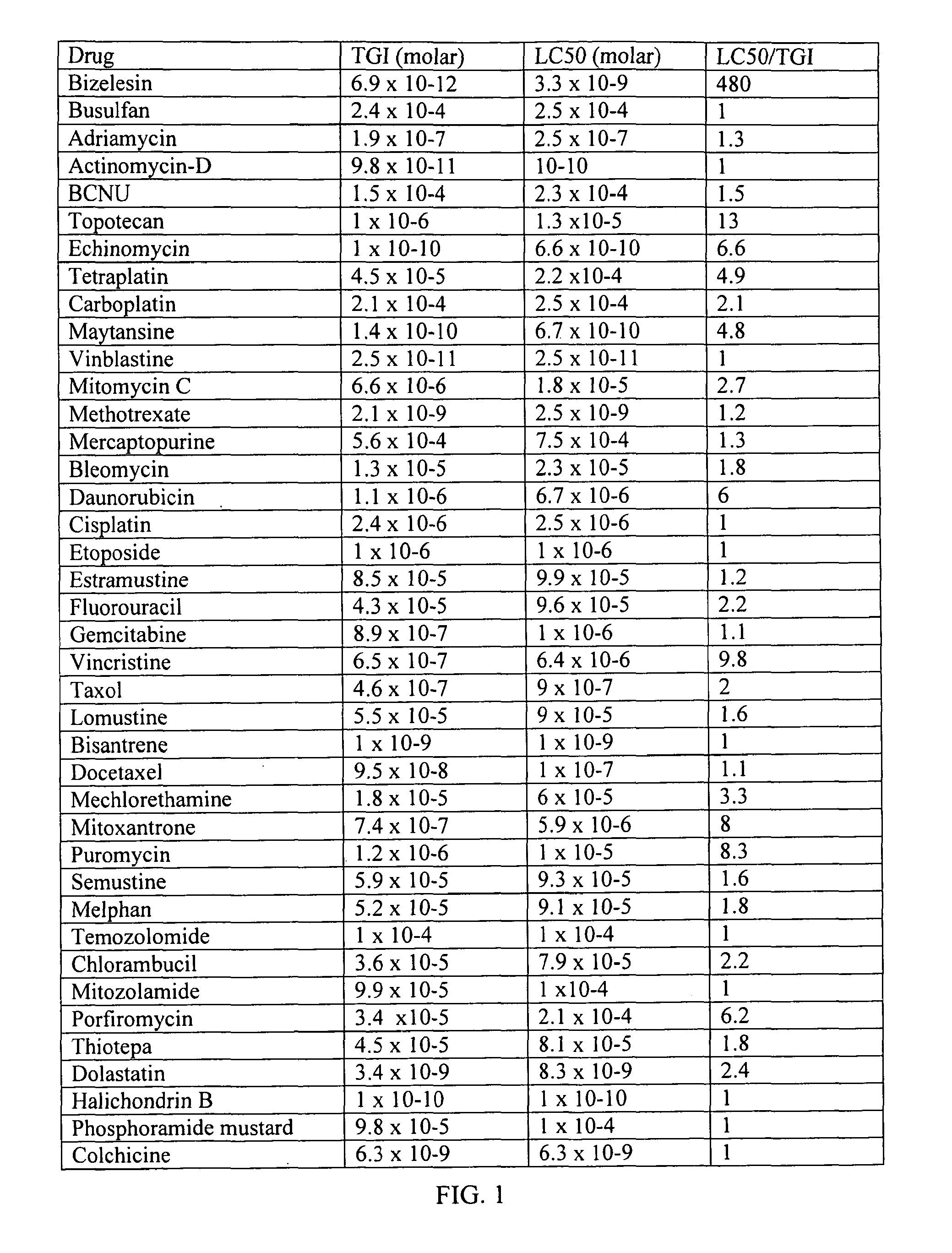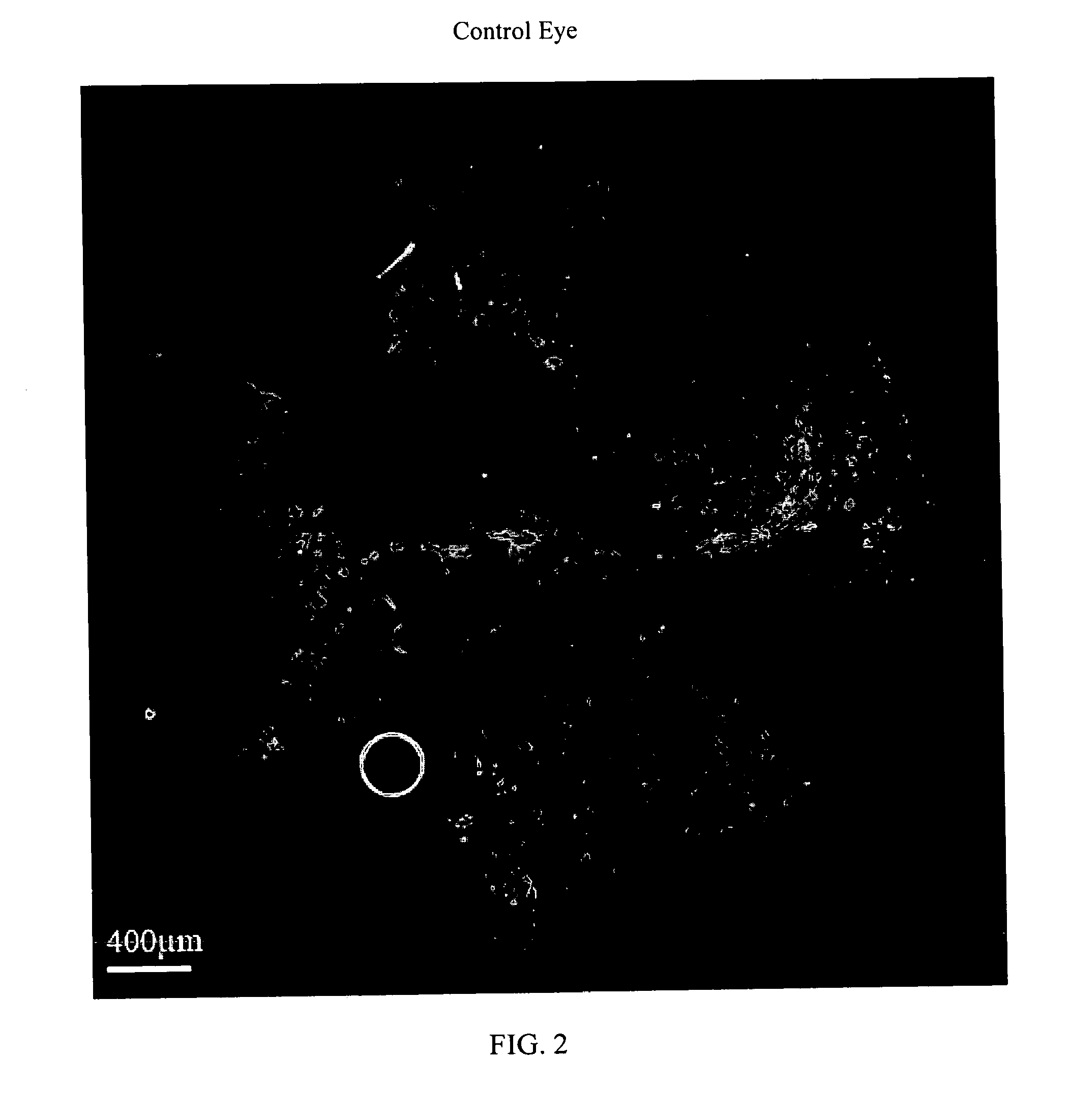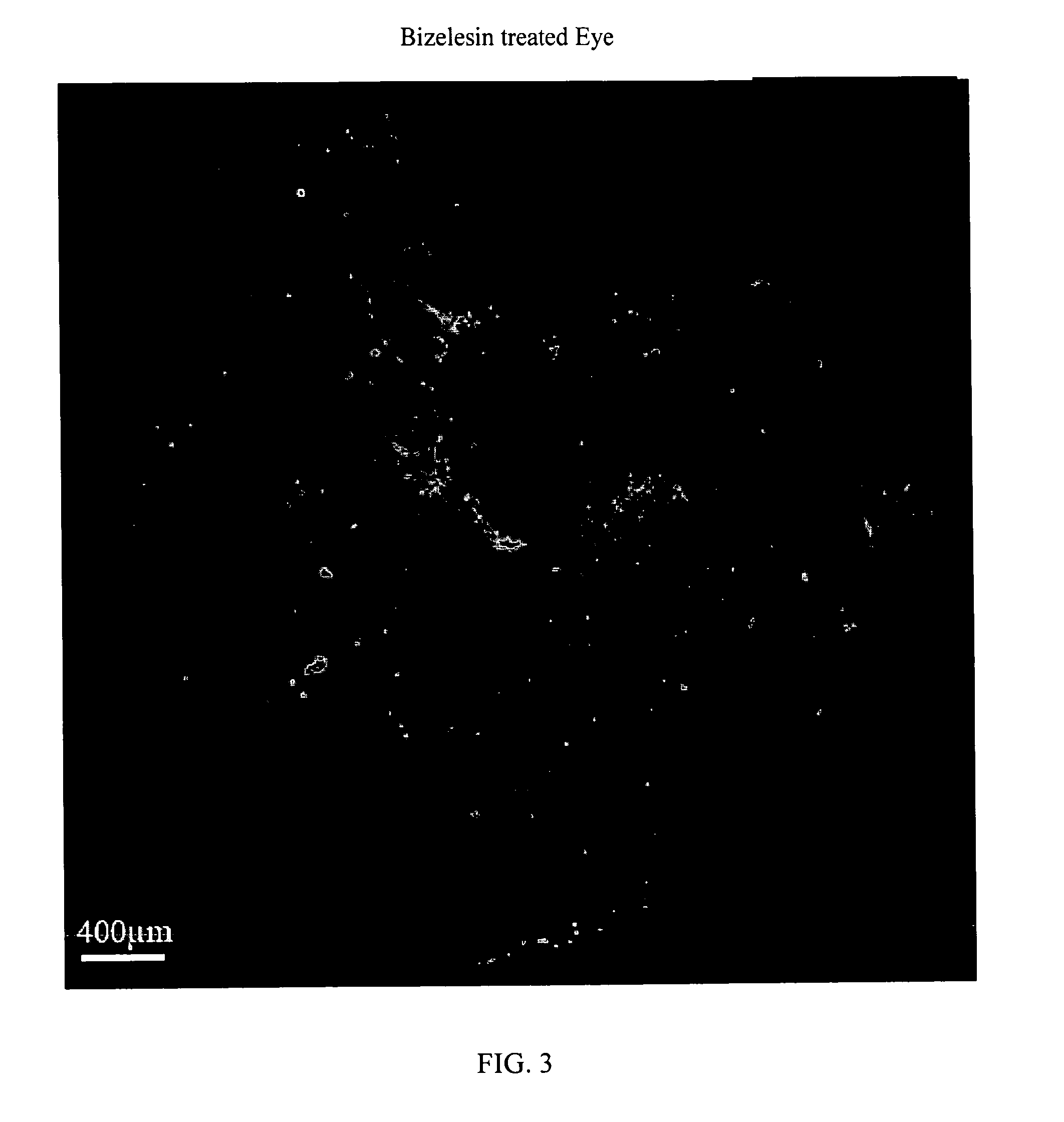Method For The Treatment Of Proliferative Disorders Of The Eye
a proliferative disorder and eye technology, applied in the field of eye proliferative disorders, can solve the problems of retinal detachment and blindness, retinal detachment, and compromising the success of retinal re-attachment surgery, and achieve the effects of inhibiting the potential for cell proliferation, and preventing the formation of cytotoxic substances
- Summary
- Abstract
- Description
- Claims
- Application Information
AI Technical Summary
Benefits of technology
Problems solved by technology
Method used
Image
Examples
example 1
[0107]Intravitreal bizelesin was evaluated in the mouse model of ischemic proliferative retinopathy. Details of the model are provided in Xie, B. et al., J Cell Physiol, 218(1): 192-8 (January 2009). The animal work was done in accordance with the Association for Research in Vision and Ophthalmology Statement for the Use of Animals in Ophthalmic and Vision Research and the guidelines of the Animal Care and Use Committee.
[0108]Bizelesin was dissolved in DMSO PharmaSolvent (Gaylord Chemical, Inc.) at 20 microgram / ml and filtered sterilized with a 0.2 micron Milliex-LG Millipore filter. HPLC analysis of the DMSO drug solution post filtration revealed that the bizelesin concentration was 11 microgram / ml. The bizelesin solution was stored at −65 C or below. Immediately prior to administration the drug solution was thawed and diluted with sterile phosphate buffered saline (PBS).
[0109]In brief, for the ischemic proliferative retinopathy model, liters of C57BL / 6 mice were exposed to 75% oxy...
example 2
[0111]Intravitreal bizelesin was evaluated in the laser induced mouse model of choroidal neovascularization. Details of the model are provided in Xie, B. et al., “Blockade of Sphingosine-1-phosphate Reduces Macrophage Influx and Retinal and Choroidal Neovascularization,”J Cell Physiol, 218(1): 192-8 (January 2009 Bizelesin was formulated in PBS as described in Example 1. In brief, 5-6 week old C57BL / 6 mice on day 0 were anesthetized and choroidal neovascularization was induced by laser photocoagulation-induced rupture of Bruch's membrane. The mice were then given an intravitreal injection of 1 microliter of control diluent in one eye and in the contralateral fellow eye 1 microliter of solution containing 6 ng to 0.006 ng of Bizelesin. Ten mice were employed per dose level. On day 14 the mice were perfused with fluorescein-labeled dextran, the retinas were isolated, flat mounts prepared, and the area of neovascularization was determined with fluorescent microscopy and computerized im...
example 3
[0112]This is an example of a single dose kit for intravitreal injection of bizelesin for the treatment of proliferative eye disorders including but not limited to diabetic proliferative retinopathy, age related macular degeneration associated proliferative retinopathy, proliferative vitreoretinopathy, sub-retinal fibrosis, polypoidal choroidal vasculopathy, proliferative vitreoretinopathy, epimacular membranes choroidal neovascularization, neovascularization of the retina, retinopathy of prematurity, neovascularization related to ocular histoplasmosis, retinal hemagioblastoma in von Hippel-Landau syndrome, uveal melanoma, ocular nevi, retinoblastoma, ocular lymphoma, and metastatic cancers to the eye.
[0113]The kit consists of:
[0114]A sterile solution of bizelesin (0.05 ng to 100 ng) dissolved in 10 to 50 microliters of pharmaceutical grade, anhydrous, dimethylsulfoxide in a labeled, amber glass vial, with a Teflon coated rubber septum, filled with dry nitrogen. The vial is stored a...
PUM
| Property | Measurement | Unit |
|---|---|---|
| Mass | aaaaa | aaaaa |
| Mass | aaaaa | aaaaa |
| Time | aaaaa | aaaaa |
Abstract
Description
Claims
Application Information
 Login to View More
Login to View More - R&D
- Intellectual Property
- Life Sciences
- Materials
- Tech Scout
- Unparalleled Data Quality
- Higher Quality Content
- 60% Fewer Hallucinations
Browse by: Latest US Patents, China's latest patents, Technical Efficacy Thesaurus, Application Domain, Technology Topic, Popular Technical Reports.
© 2025 PatSnap. All rights reserved.Legal|Privacy policy|Modern Slavery Act Transparency Statement|Sitemap|About US| Contact US: help@patsnap.com



